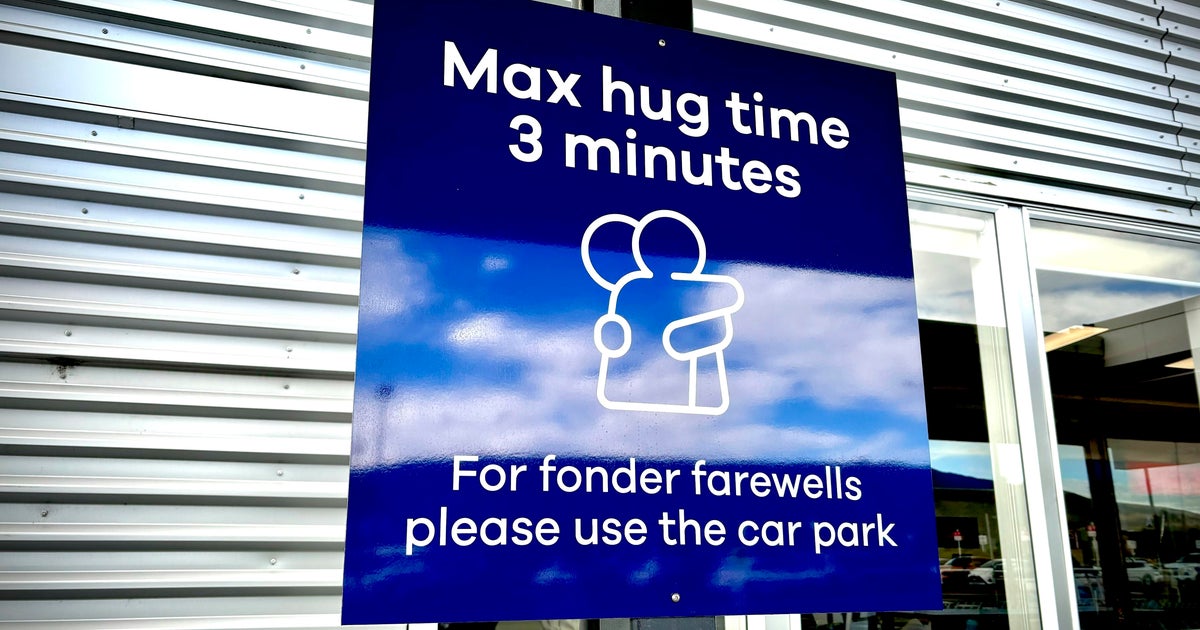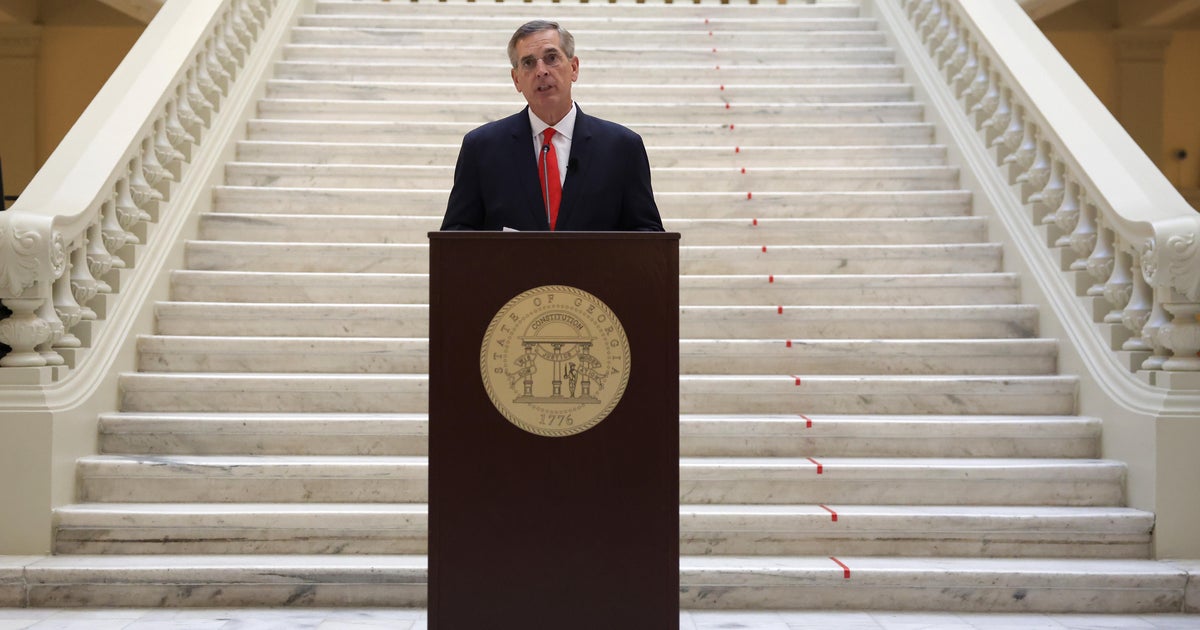CBS News
In some battleground states, low-wage workers keep losing ground

Half of the eight battleground states in this year’s U.S. presidential election use the federal minimum wage of $7.25 an hour, a rate that hasn’t changed since 2009 despite a 47% surge in the cost of living since then. In essence, that means minimum-wage workers in those states have seen much of their purchasing power vaporized by inflation over the past 15 years.
Donald Trump’s October 20 visit to a McDonald’s location in Feasterville, Pennsylvania, where the former president served food to pre-selected supporters, has renewed public attention on how much low-income workers earn. Asked by CBS News reporter Olivia Rinaldi if he thought the minimum wage should be raised after spending time behind the counter at the fast-food restaurant, Trump sidestepped the question.
“Well, I think this. I think these people work hard. They’re great,” he said. “And I just saw something a process. It’s beautiful. It’s a beautiful thing to see. These are great franchises and produce a lot of jobs, and it’s good and great people working here too.”
Trump’s campaign didn’t immediately respond to a request for comment about the former president’s views on the minimum wage.
Vice President Kamala Harris has stated that she wants to raise the nation’s minimum wage, as well as the sub-minimum wage that is earned by tipped workers. Both Trump and Harris have proposed eliminating income taxes on tips as a way to boost earnings for people in the hospitality industry.
While the federal minimum wage has been frozen since 2009, 30 states have stepped in to boost wages for their lowest-earning workers, according to the left-leaning Economic Policy Institute. That’s left 20 states still paying the federal baseline wage, representing annual earnings of $15,000. Those states are mostly in the South and Midwest, including the four battleground states that use the $7.25 an hour minimum: Georgia, North Carolina, Pennsylvania and Wisconsin.

Experts note tha workers in these locations are at risk of falling behind people who reside in states providing a higher pay floor.
“It’s ridiculous that Pennsylvania has a lower minimum wage than its neighbors as well as states like Arkansas, Florida and Nebraska, where voters had a chance to pass raises through ballot initiatives,” Holly Sklar, CEO of Business for a Fair Minimum Wage, a group that advocates for higher pay, told CBS MoneyWatch.
Earning $7.25 an hour “is a poverty wage, and it’s bad for business as well as workers,” Sklar added.
The minimum wage versus inflation
The renewed focus on worker pay comes amid polling that shows many people continuing to struggle financially even as inflation fades and the job market continues to click.
A majority of Americans say they feel worse off than four years ago, according to Gallup, a pessimism that could sway their decisions in the November 5 election. And 6 in 10 voters describe the U.S. economy as either “fairly bad” or “very bad,” according to CBS News polling.
That is likely tied to elevated prices caused by the hottest inflation in 40 years, which outpaced wage growth during the pandemic. Yet since May 2023, the typical worker’s pay has outpaced inflation, boosting their purchasing power.
That isn’t the case for workers who earn the federal minimum wage because it isn’t indexed to inflation, a step that some states are now taking to ensure that people can keep up with the rising cost of living. If the federal minimum wage had been indexed for inflation, it would now stand at $10.61 per hour.
The four other battleground states have lifted their hourly minimum wage to about that level, or even higher:
- Arizona: $14.35 an hour
- Michigan: $10.33 an hour
- Nebraska: $12 an hour
- Nevada: $12 an hour
“In our region, the minimum wage has gone up in surrounding states but not in Pennsylvania,” noted Keystone Research Center, a think tank for Pennsylvania-related issues, in a blog post. “Minimum-wage workers in Pennsylvania have also lost ground relative to workers in the middle of the wage distribution, that is, relative to the median wage.”
CBS News
EPA finalizes stricter rules limiting kids’ exposure to lead paint

Washington — Two weeks after setting a nationwide deadline for removal of lead pipes, the Biden administration is imposing strict new limits on dust from lead-based paint in older homes and child-care facilities.
A final rule announced Thursday by the Environmental Protection Agency sets limits on lead dust on floors and window sills in pre-1978 residences and child-care facilities to levels so low they can’t be detected.
Paint that contains lead was banned in 1978, but more than 30 million American homes are believed to still contain it, including nearly 4 million homes where children under the age of 6 live. Lead paint can chip off when it deteriorates or is disturbed, especially during home remodeling or renovation.
“There is no safe level of lead,” said Michal Freedhoff, EPA’s assistant administrator for chemical safety and pollution prevention. The new rule will bring the United States “closer to eradicating lead-based paint hazards from homes and child care facilities once and for all,” she said.
The EPA estimates the new rule will reduce the lead exposures of up to 1.2 million people per year, including 178,000 to 326,000 children under age 6.
Lead is a neurotoxin that can irreversibly harm brain development in children, lower IQ, cause behavioral problems and lead to lifelong health effects. It also affects other organs, including the liver and kidneys.
The new rule, which takes effect early next year, targets levels of lead dust generated by paint. Currently, 10 micrograms per square foot is considered hazardous on floors, and a concentration 10 times that high is considered hazardous on window sills. The new rule brings both of those levels down to no detectable lead.
The proposed rule also would reduce what level is allowed when a lead-abatement contractor finishes work on a property where lead has been identified as a problem. These levels would be 5 micrograms per square foot on the floor and 40 micrograms per square foot for sills.
Individuals and firms that perform abatement work must be certified and follow specific work practices. Testing is required afterward to ensure dust-lead levels are below the new standards.
Environmental justice and public health experts called the EPA rule long overdue, noting that lead poisoning disproportionately affects low-income communities and communities of color.
“We can all breathe a little easier now that the EPA has significantly lowered its dust lead standard to protect children,” said Peggy Shepard, co-founder and executive director of WE ACT for Environmental Justice, a New York-based advocacy group.
Shepard, who serves on the White House Environmental Justice Advisory Council, said public health experts have long understood there is no safe level of lead in a child’s blood, yet New York state leads the nation in cases of children with elevated blood levels. Black children in Harlem living below the poverty line are twice as likely to suffer from lead poisoning as poor white children, she said.
The U.S. government has gradually been reducing the standard for what counts as poisonous levels of lead in children’s blood, with the most recent change occurring in 2021. But the EPA rule marks an effort to take more proactive action.
“When you are relying on the blood lead level in children to indicate whether there is lead in the environment, we are basically using the children as canaries in the mine,” said Dr. Philip Landrigan, a Boston College biology professor who directs the school’s Program for Global Public Health and the Common Good.
The National Child Care Association said when the lead rule was proposed last year that it could hurt many financially struggling child-care centers – especially those in low-income neighborhoods, where the facilities tend to be older. Without appropriate federal funding, the rule could push small, local child-care centers to close, the group said.
Earlier this month, the federal Department of Housing and Urban Development announced $420 million in grants to remove lead hazards from homes, including HUD-assisted homes. Additional HUD grants will continue to be available to help with lead paint removal, the White House said.
CBS News
Indiana man gets life in prison for 1975 killing of teen who “fought for her life”

An Indiana man has been sentenced to life in prison for the 1975 killing of a 17-year-old girl who was found dead in a river after she failed to return home from her job at a church camp.
A Noble County judge sentenced Fred Bandy Jr., 69, on Tuesday to a life term with the possibility of parole in Laurel Jean Mitchell’s August 1975 death. The Goshen man was convicted of first-degree murder this month following a bench trial.
A message was left seeking comment from Bandy’s attorney Wednesday.
He was charged along with John Wayne Lehman, 69, of Auburn, Indiana, last year in Mitchell’s killing. Lehman was sentenced to eight years in prison this month after pleading guilty to conspiracy to commit murder.
Mitchell was found drowned in the Elkhart River on Aug. 7, 1975, the morning after she failed to return home in North Webster, about 140 miles northeast of Indianapolis.
WTTV
Although Mitchell’s cause of death was ruled as drowning, police say the autopsy report suggested that she “had fought for her life,” so police initiated a murder investigation.
Prosecutors charged Bandy and Lehman in Mitchell’s killing in February 2023, nearly a half-century later.
Lehman said in an August deposition that Bandy raped Mitchell and drowned her. Lehman denied participating in the rape or the murder and said his fear of Bandy kept him from trying to stop the crimes, The News-Sun of Kendallville reported.
According to a probable cause affidavit, investigators said they believed Bandy and Lehman “forcibly, deliberately drowned” Mitchell after taking her to the river in Bandy’s car.
A DNA profile was obtained in recent years through testing on Mitchell’s clothing, which was saved along with other evidence collected in 1975. According to the affidavit, Bandy voluntarily provided a DNA sample in December 2022 to state police, and testing determined he was 13 billion times “more likely to be the contributor of the DNA in Laurel J. Mitchell’s clothing than any other unknown person.”
The DNA testing came after three people who were teens at the time of Mitchell’s killing tied Bandy and Lehman to the crime based on incriminating comments they had made about her death, the affidavit states.
CBS affiliate WTTV reported that because Bandy had to be sentenced by 1975 standards, the potential outcomes were either life with the possibility of parole or the death sentence, prosecutors said. The state’s death penalty as of 1975 was later declared unconstitutional, ruling out that option.
CBS News
New Zealand airport with 3-minute cap on farewell hugs “surprised how much global interest” there’s been

Wellington — A New Zealand airport has imposed a three-minute limit on farewell hugs, sparking a worldwide debate over how long to cling on for a cuddle. Bosses at the international airport in the southern city of Dunedin say they were surprised by the viral response to their new rule in the car drop-off zone.
“To keep things moving smoothly, we’ve installed new signage, including the ‘Max hug time 3 minutes’ sign,” said airport chief executive Daniel De Bono. “It’s our way of being a little quirky and reminding people that the drop-off zone is for quick farewells.”
“And don’t worry,” added De Bono, “just a 20-second hug is enough to release oxytocin and serotonin, the happy hormones that boost well-being, so three minutes is plenty of time to say goodbye and get your dose of happiness.”
Sarah Soper/AP
People who want a longer hug can use the parking lot, where the first 15 minutes are free, he added.
The hug restriction made headlines worldwide — and prompted a divided online response.
“I’m just glad there’s no minimum hug time. A ‘see ya soon’ suffices,” one woman commented on the airport’s Facebook page.
“Hug Police!? This is just weird! Hugs are proven to have many benefits not to mention mental health,” said another poster.
The small airport, which was used by fewer than 1 million passengers last year, said it had imposed the hug time limit in September, with little initial reaction.
“We have just been surprised how much global interest there has been,” said the airport’s marketing and communications executive, Sarah Soper.










